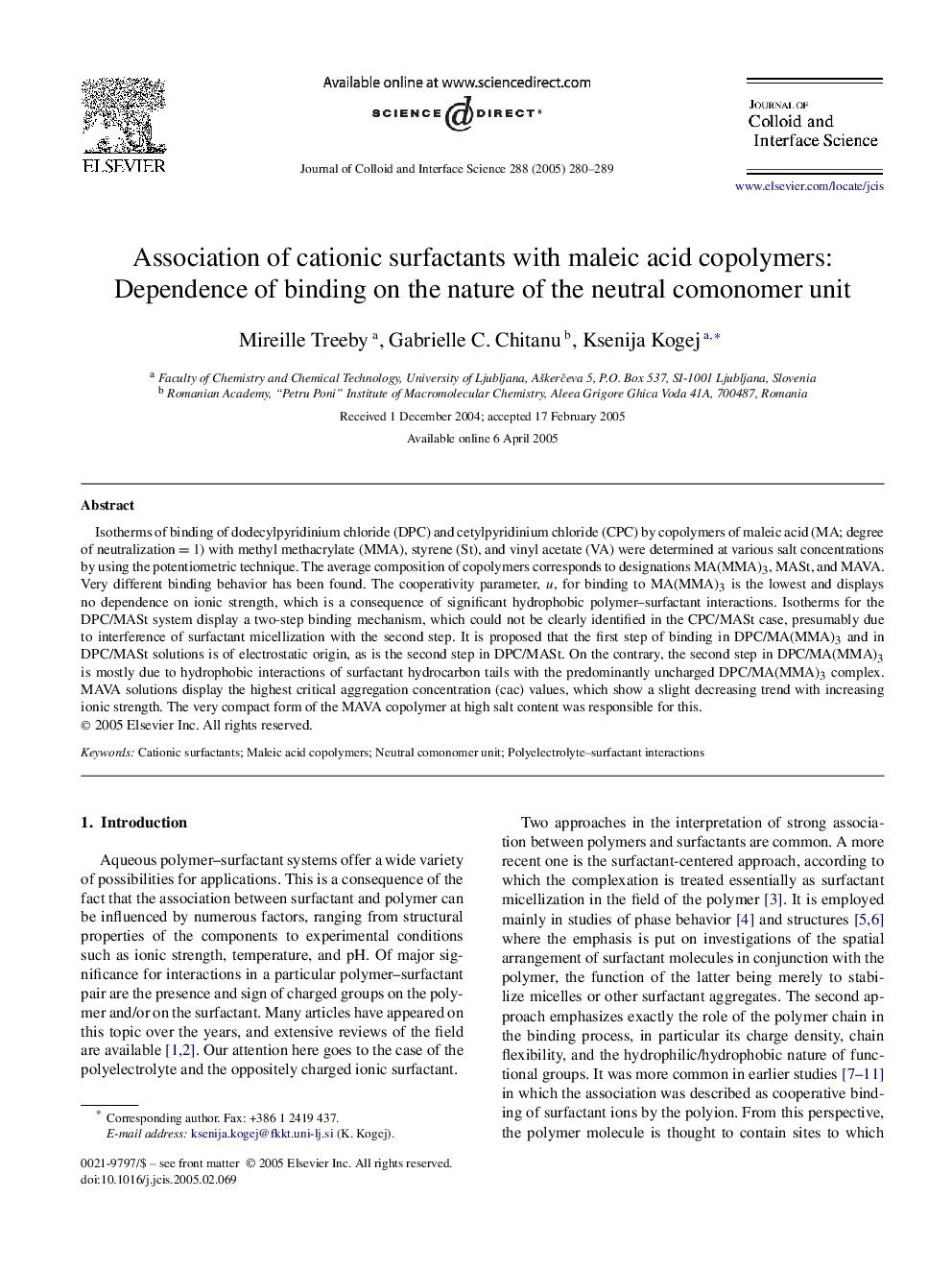| Article ID | Journal | Published Year | Pages | File Type |
|---|---|---|---|---|
| 10377882 | Journal of Colloid and Interface Science | 2005 | 10 Pages |
Abstract
Isotherms of binding of dodecylpyridinium chloride (DPC) and cetylpyridinium chloride (CPC) by copolymers of maleic acid (MA; degree of neutralization=1) with methyl methacrylate (MMA), styrene (St), and vinyl acetate (VA) were determined at various salt concentrations by using the potentiometric technique. The average composition of copolymers corresponds to designations MA(MMA)3, MASt, and MAVA. Very different binding behavior has been found. The cooperativity parameter, u, for binding to MA(MMA)3 is the lowest and displays no dependence on ionic strength, which is a consequence of significant hydrophobic polymer-surfactant interactions. Isotherms for the DPC/MASt system display a two-step binding mechanism, which could not be clearly identified in the CPC/MASt case, presumably due to interference of surfactant micellization with the second step. It is proposed that the first step of binding in DPC/MA(MMA)3 and in DPC/MASt solutions is of electrostatic origin, as is the second step in DPC/MASt. On the contrary, the second step in DPC/MA(MMA)3 is mostly due to hydrophobic interactions of surfactant hydrocarbon tails with the predominantly uncharged DPC/MA(MMA)3 complex. MAVA solutions display the highest critical aggregation concentration (cac) values, which show a slight decreasing trend with increasing ionic strength. The very compact form of the MAVA copolymer at high salt content was responsible for this.
Related Topics
Physical Sciences and Engineering
Chemical Engineering
Colloid and Surface Chemistry
Authors
Mireille Treeby, Gabrielle C. Chitanu, Ksenija Kogej,
